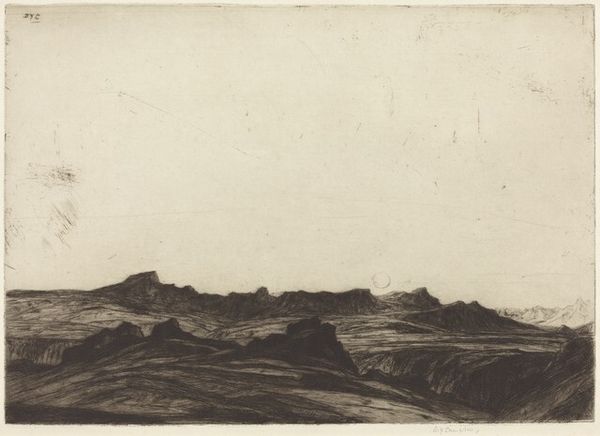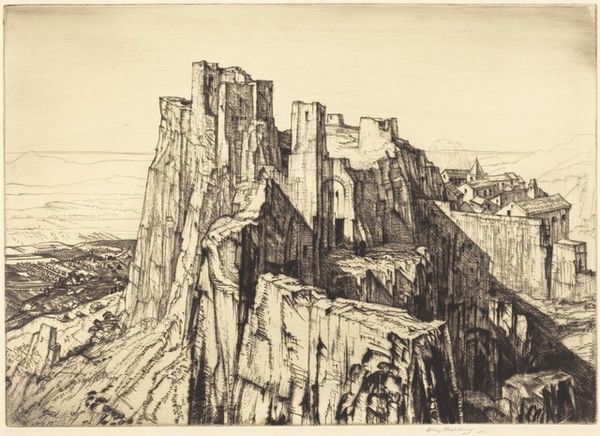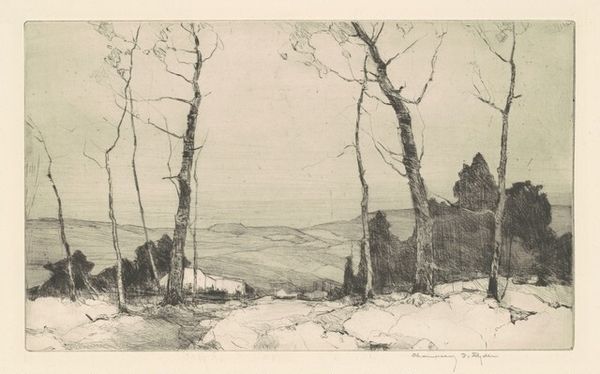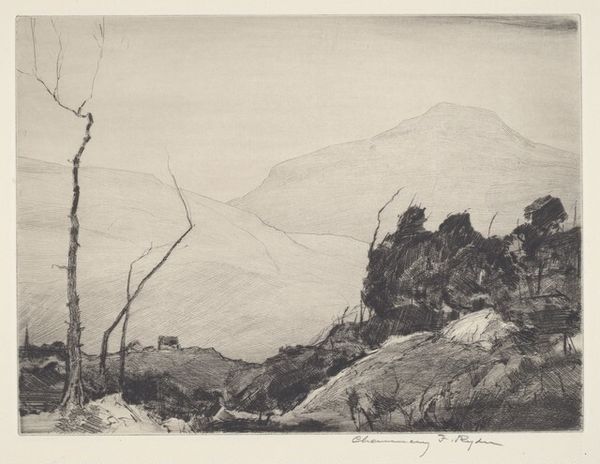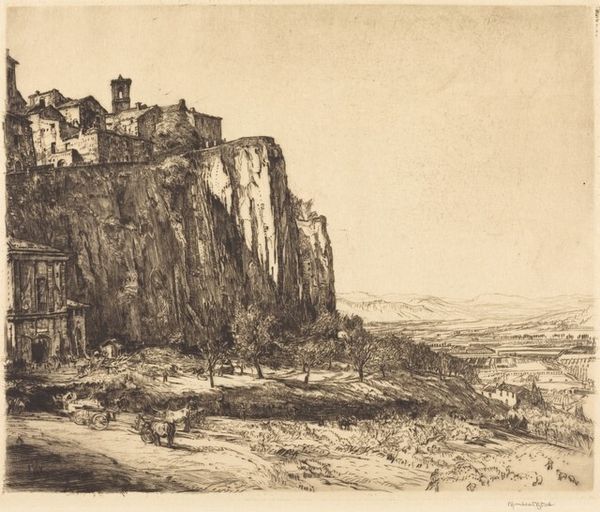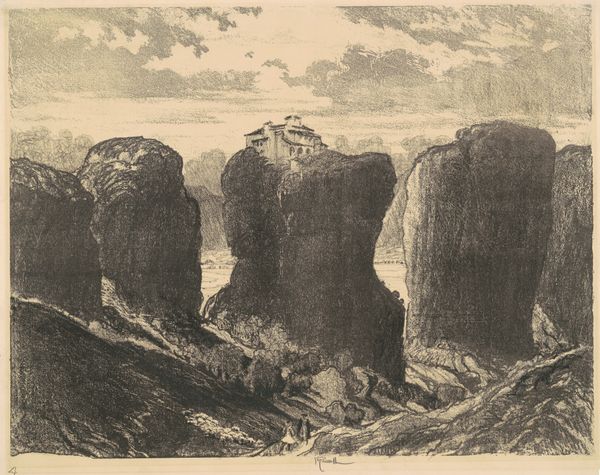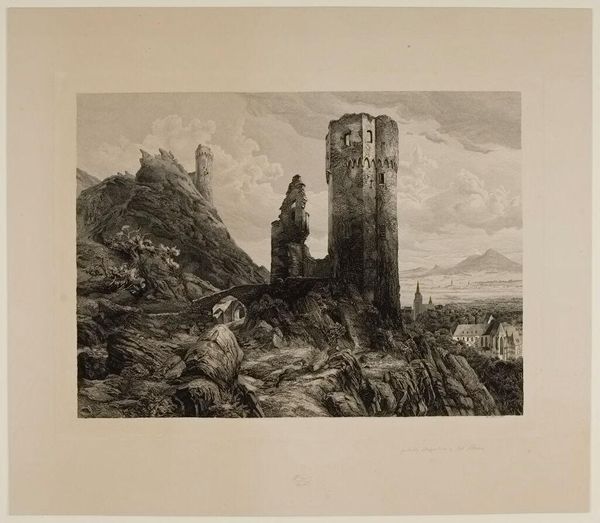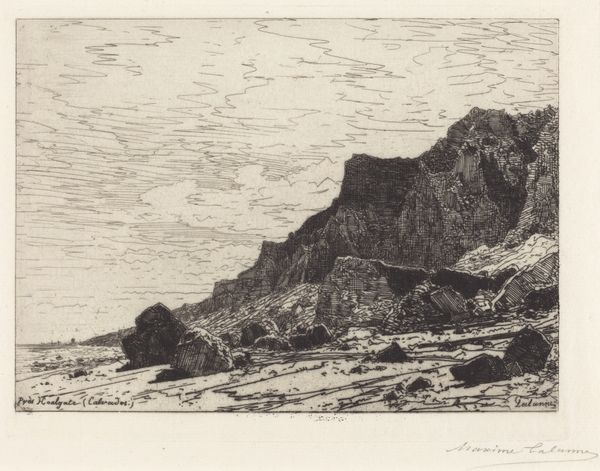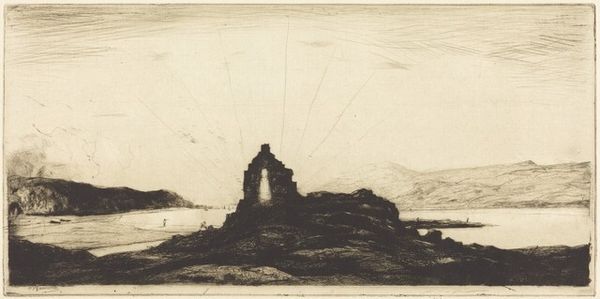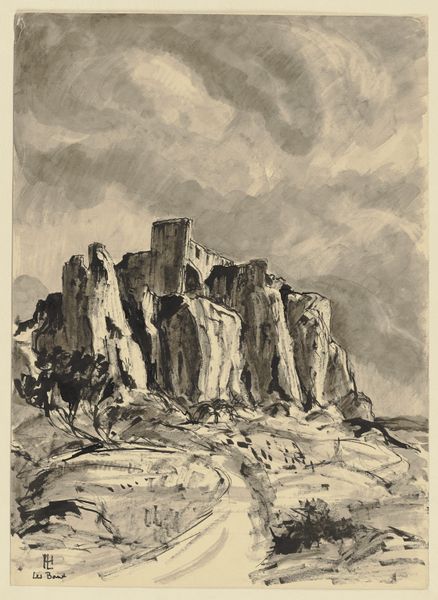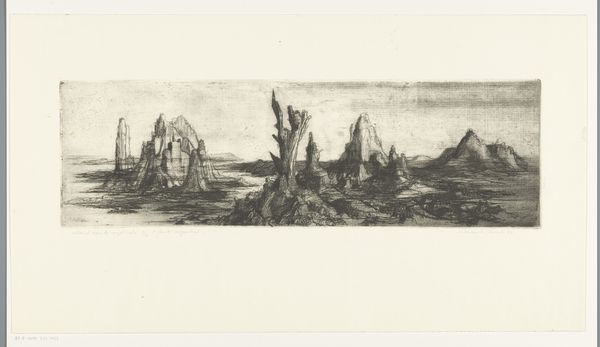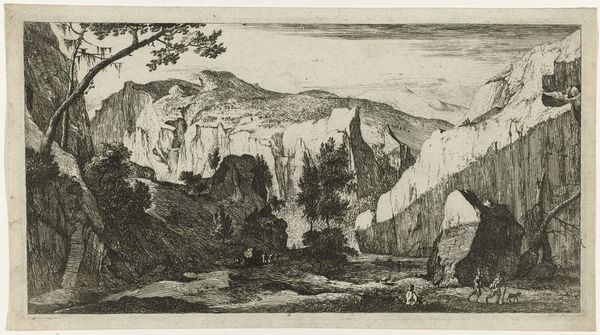
print, etching
# print
#
etching
#
landscape
#
realism
Dimensions: plate: 25.08 × 30.32 cm (9 7/8 × 11 15/16 in.) sheet: 34.29 × 39.05 cm (13 1/2 × 15 3/8 in.)
Copyright: National Gallery of Art: CC0 1.0
Curator: Right in front of us is Chauncey Foster Ryder’s etching from the 1920s, entitled "Spruce Land". Editor: My first impression is of a muted palette, stark lines, and a generally melancholic mood. The composition feels almost severe. Curator: I find myself thinking about the socio-economic contexts of Ryder's time. The 1920s in America, with its burgeoning industrialization and post-war anxieties. Do you think there is an implicit commentary on humanity's relationship with nature in this work? The ruggedness seems to assert a very masculine ideal of endurance, even in the landscape. Editor: Masculinity perhaps, but the strength lies in its compositional rigor, achieved through the dense hatching and cross-hatching to construct value, especially in the spruces themselves. They rise like sentinels, the dark lines contrasting dramatically with the sky, establishing a powerful vertical rhythm. Curator: Thinking about the era, this piece might be situated within the broader narrative of conservationism. Early environmental movements were emerging. What about gender, too? Was Ryder presenting a masculine challenge to, perhaps, feminine interpretations of landscape as soft and welcoming? Editor: Such theories, while valid in principle, might deflect us from appreciating how the medium contributes meaning to the artwork. This etching exemplifies superb control, transforming minute details into significant elements through careful manipulation of line. The horizon line, in particular, creates depth. Curator: But those details ARE always political! Consider the accessibility of land ownership and nature in the 1920s; who could really access or enjoy this imagined landscape? It likely wasn't accessible equally to all, or felt very different depending on race and class. Editor: Fair enough, though my take focuses on the artwork’s intrinsic value. Ryder manipulated tone and texture skillfully, presenting an intriguing visual experience that reflects much of Realist conventions of that time. Curator: Perhaps we meet in the middle and acknowledge the artistry and its undeniable link to prevailing narratives. The experience is compelling BECAUSE it gives artistic expression to ideologies already present at the time. Editor: An astute observation. By looking so intently, Ryder allows us a glimpse into the forms, textures, and perspectives that captivated the artist's eye, shaped by and also reflecting its era.
Comments
No comments
Be the first to comment and join the conversation on the ultimate creative platform.
